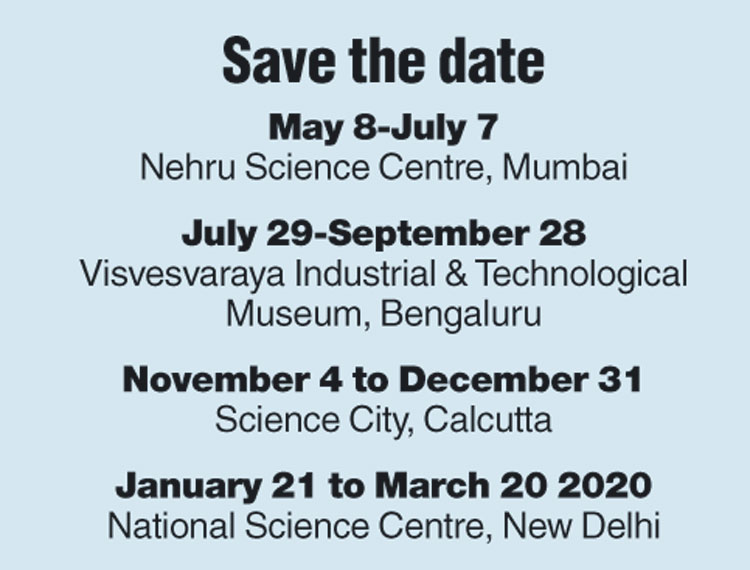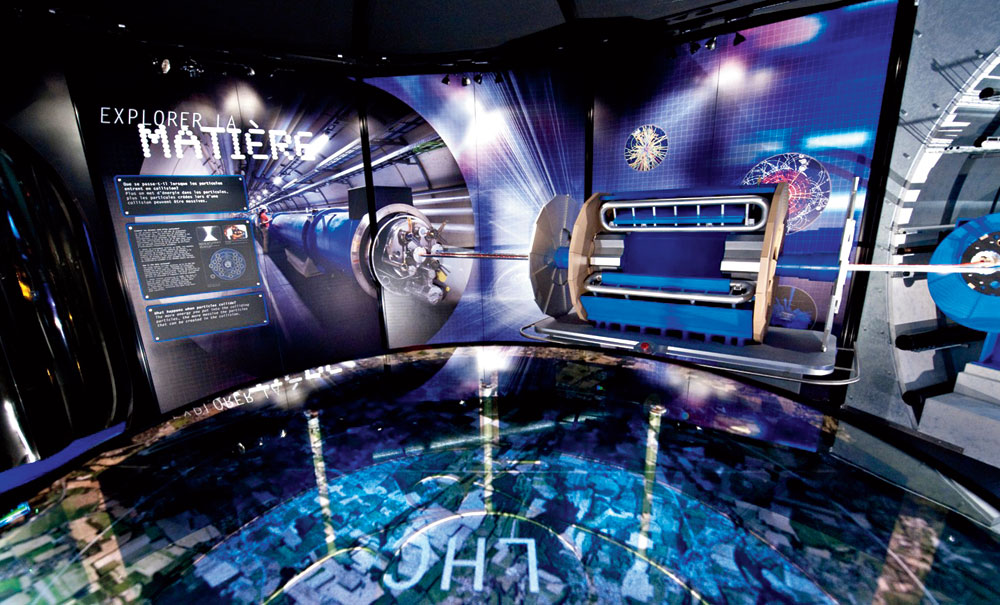Quite a few mysteries of science have been solved in the recent past — the elusive Higgs-Boson or god particle was pinned down, the neutrino or ghost particle studied, the behaviour of colliding neutron stars observed. Each of these discoveries was the work of a mega science project of which the Large Hadron Collider or LHC at CERN (European Organisation for Nuclear Research) is perhaps the oldest and best known. The speciality of these mega projects, apart from their stellar work, is that all of them are major international collaborations.
And while we get to know a lot about the new discoveries these mega projects are responsible for, we have only a vague idea about how they work. That is about to change when CERN’s flagship travelling exhibition, Accelerating Science, visits India next month.
“The exhibition aims to inspire a sense of wonder and curiosity about the origins of the universe and basic constituents of matter. It shows how the Large Hadron Collider and more than 13,000 scientists from around the world try to unravel some of the mysteries of the universe,” comments Rolf Landua, head of exhibitions and global engagement, CERN.
In the next 10 months, the exhibition will travel to four metros in the country. Alongside CERN, it will also feature six other massive science projects in which Indian scientists are playing a large role. It has been named Vigyan Samagam and is being funded jointly by the Department of Atomic Energy and the Department of Science and Technology, the Government of India.
“We will work together [with various partners] to host this exhibition in four major metros where we have national-level [science] centres with reasonably large footfall,” says Arijit Dutta Choudhury, director general of National Council of Science Museums (NCSM), which has hosted several international and national science exhibitions over the years.
The Vigyan Samagam will stop at each city for a couple of months to enable lakhs of young students to visit it and be ensnared by the magic of fundamental science. The exhibits will include live working models, interactive pods or displays as well as posters with key facts about the mega science projects.

Learning about the LHC tunnel Picture: CERN
Apart from CERN, the other major scientific projects are the Facility for Antiproton and Ion Research (FAIR), the International Thermonuclear Experimental Reactor (ITER), the India Neutrino Observatory, the Laser Interferometer Gravitational-wave Observatory (LIGO), the Square Kilometre Array (SKA) telescope and the Thirty Metre Telescope (TMT).
The India Neutrino Observatory is a multi-institutional, experimental project aimed at studying neutrinos, fundamental particles in physics. The underground laboratory is built under about 1,200 metres of rock near Theni in Tamil Nadu.
According to the standard model of particle physics, neutrinos have no mass. Recent experiments, however, indicate that these chargeless particles do have a low but finite mass, which is unknown. The determination of the mass of a neutrino is one of the most important unsolved problems in physics today.

LHC tunnel's mini-model Picture: CERN
In Southern France, 35 nations are collaborating to solve another big problem — the feasibility of fusion as a large-scale and carbon-free source of energy. Under the ITER (it means “the way” in Latin), the world’s largest tobamak — a magnetic fusion device — is being built to mimic the way the sun is powered. It will be the first fusion device to test integrated technologies, materials and physics regimes necessary for the commercial production of fusion-based electricity.
If ITER is trying to fill a need, so is FAIR. The international accelerator facility being built in Darmstadt, Germany, will produce matter that usually exists only in deep space. This will help scientists gain new insights into the structure of matter as well as the evolution of the universe. The accelerator will have a circumference of 1,100 metres and generate particle beams of unparalleled intensity.

The Telegraph
The LIGO, whose most famous discovery was the pair of colliding blackholes 1.3 billion light years away that it detected in 2017, studies gravitational waves predicted by Einstein’s Theory of General Relativity. It uses laser interferometry to measure the minute ripples in the fabric of space-time caused by passing gravitational waves from cataclysmic cosmic events.
The SKA telescope too studies the sky and is an international effort to build the world’s largest radio telescope. It will eventually use thousands of dishes and up to a million low-frequency antennas that will enable astronomers to survey the sky in unprecedented detail. Its images will be better that even those of the Hubble Space Telescope. It will also be able to monitor the sky much faster that any system currently in existence.
While the SKA is a radio telescope, the TMT is a new class of extremely large visible-light telescopes. With its 30-metre mirror diameter, TMT will provide images that are 12 times sharper than those taken by the Hubble Space Telescope. It will allow astronomers to peer deeper into space and observe cosmic bodies with unprecedented sensitivity.
Find out when the exhibition is travelling to the metro city nearest you and make a date with the mysteries of science.
The author is an Indian scientist who initiated the CERN India mega exhibition










